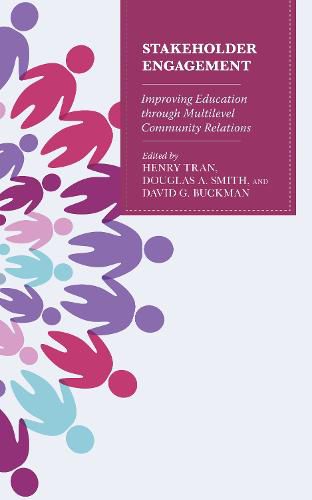Readings Newsletter
Become a Readings Member to make your shopping experience even easier.
Sign in or sign up for free!
You’re not far away from qualifying for FREE standard shipping within Australia
You’ve qualified for FREE standard shipping within Australia
The cart is loading…






This book focuses on the topic of the multiple-stakeholders that comprise the education community across the P-20 continuum. In various ways and forms, the authors of the chapters found within this book promote the importance of engaging with the diverse array of stakeholders in order to truly improve education in an increasingly interconnected world. The book itself is divided into two major arcs, the first of which covers community relations and stakeholder engagement in P-12 schools, while the second addresses those same issues in higher education. When one considers the activities that take place within education institutions, there is a realization that they are influenced and driven by much more than just the educators and administrators who occupy the schools. In the editors’ own work, (e.g., see Tran & Bon, 2016), the importance of the inclusion of the viewpoints and inputs of multiple-stakeholders in school decisions when appropriate has been consistently argued, given that the school is considered by many to be a social and communal environment. To address these issues, in this text, this book is lucky to have a collection of peer-reviewed writing that explore various aspects of how multiple-stakeholder input can be used to improve school decisions.
$9.00 standard shipping within Australia
FREE standard shipping within Australia for orders over $100.00
Express & International shipping calculated at checkout
This book focuses on the topic of the multiple-stakeholders that comprise the education community across the P-20 continuum. In various ways and forms, the authors of the chapters found within this book promote the importance of engaging with the diverse array of stakeholders in order to truly improve education in an increasingly interconnected world. The book itself is divided into two major arcs, the first of which covers community relations and stakeholder engagement in P-12 schools, while the second addresses those same issues in higher education. When one considers the activities that take place within education institutions, there is a realization that they are influenced and driven by much more than just the educators and administrators who occupy the schools. In the editors’ own work, (e.g., see Tran & Bon, 2016), the importance of the inclusion of the viewpoints and inputs of multiple-stakeholders in school decisions when appropriate has been consistently argued, given that the school is considered by many to be a social and communal environment. To address these issues, in this text, this book is lucky to have a collection of peer-reviewed writing that explore various aspects of how multiple-stakeholder input can be used to improve school decisions.